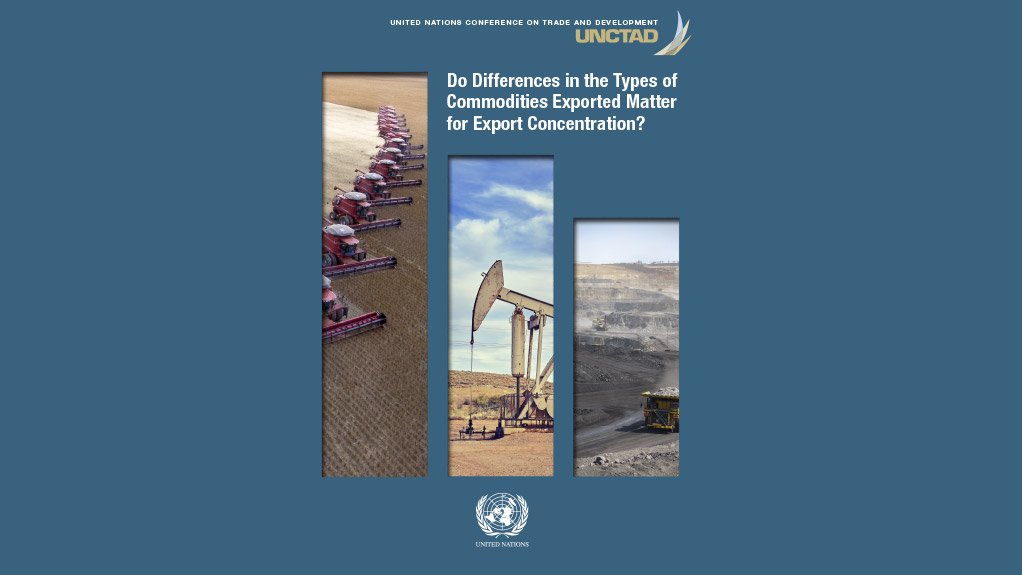- Do Differences in the Types of Commodities Exported Matter for Export Concentration?4.48 MB
Many developing economies are characterized by a highly concentrated export sector. In these countries, exports are often limited to a small number of products, and in several cases, one primary commodity accounts for more than half of a country's total export earnings.
In the developing world, export commodity dependence is pervasive. Almost two-thirds of developing countries are commodity-dependent, meaning that at least 60 per cent of their merchandise export revenues come from commodity exports.
Poor countries are particularly commodity dependent. Indeed, 85 per cent of Least Developed Countries (LDCs) and 81 per cent of Land-Locked Developing Countries (LLDCs) are commodity-dependent. The total number of commodity dependent countries stands at 102 countries.
What determines such high concentration on commodity exports? Different studies have found that determinants of export concentration include the level of development of a country (measured by GDP per capita), the size of the economy (measured by population or GDP size), trade barriers and costs, the terms of trade, export prices, composition of production factors including natural resource endowments, indicators of human and physical capital stock, and institutional quality.
This paper adds to the literature by examining whether the type of commodity dominating a country's exports matters for export concentration.
Using a dataset covering 173 countries, including 87 commodity-dependent developing countries, we estimate dynamic panel data models that control for a large set of determinants of export concentration.
We find that GDP shares of energy exports and, to a lesser extent, GDP shares of minerals, are important determinants of export concentration.
Our results imply that developing countries that are dependent on energy or minerals sectors face challenges that are different from those faced by countries dependent on the export of agriculture and manufacturing products.
Economic and export diversification policies need to take these differences into account, considering that variations in the composition of exports require country and sector-specific policies for export diversification.
Report by Unctad
EMAIL THIS ARTICLE SAVE THIS ARTICLE ARTICLE ENQUIRY
To subscribe email subscriptions@creamermedia.co.za or click here
To advertise email advertising@creamermedia.co.za or click here











